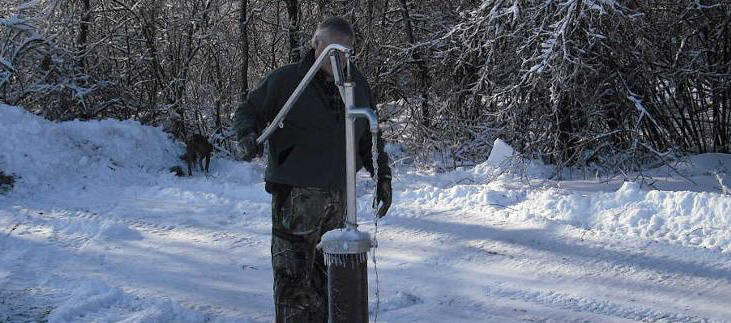We are often asked about how the pump functions in freezing weather. If you are using a Bison Pump Deep Well Pump Head and associated drop pipe, then the solution is a small hole away.

Background
Water is lifted up through the drop pipe by the cylinder and pump handle action. Eventually the water level reaches the spout on the pump head. Once at this level, the water begins to flow from the well.
That is the basic function of the pump system. When pumping is stopped the water level remains stable due to the check valve in the bottom of the cylinder acting as a foot valve. Therefore, we must introduce another exit option for the water since it cannot flow back through the foot valve. See Weep Hole Diagram.
The last section of drop pipe (the one that attaches to the pump head) gets a 1/8” diameter “weep” hole drilled into one side (the well owner performs this task). That section of drop pipe is then attached to the pump head. Now when the pumping action stops water starts to slowly “weep” through the 1/8” hole and flow back into the well. When the water level reaches the weep hole the water flow stops. That is the reason the weep hole is placed just below the frost line. By keeping the water level below the frost line, the temperature is high enough that freezing does not occur. In addition, the weep hole is small enough that it doesn’t affect the water flow of the system.
Therefore, the drain back system of using a weep hole to reduce the water level below the frost line is the reason the pump does not freeze and is “Freeze Proof”.
It is important to remember that Stacked Deep Well Pump Systems and the Submersible Deep Well Pump have water output above ground. Therefore, the weep hole will not prevent these types of deep well pumps from freezing. In addition, all Shallow Well Pumps will freeze because the “cylinder/pump” is above ground.

